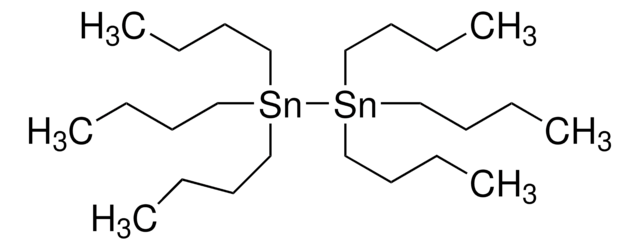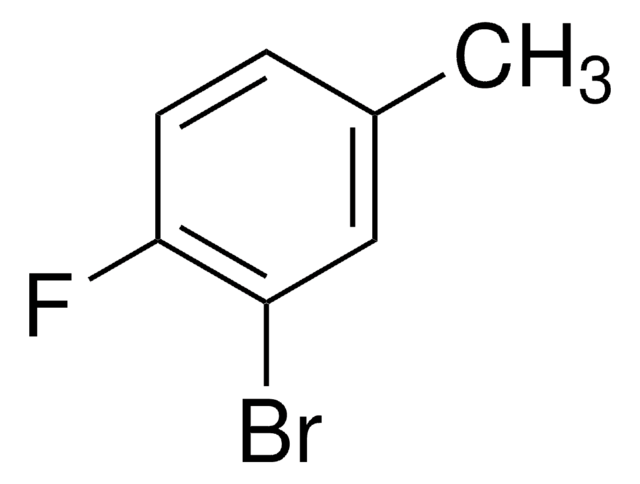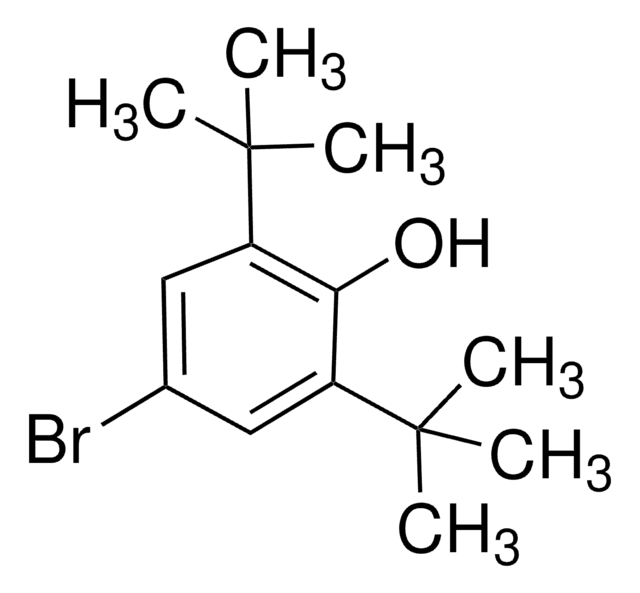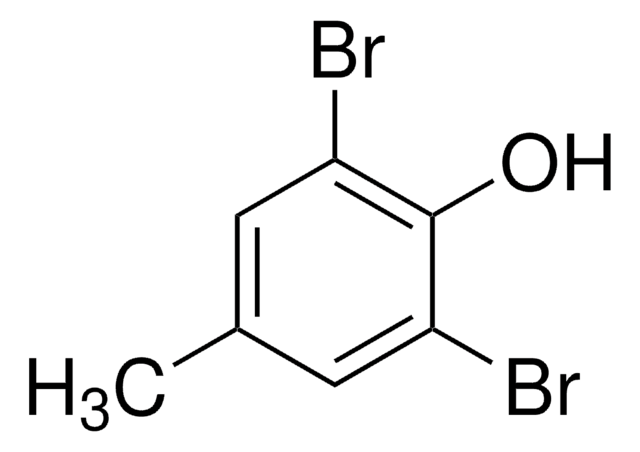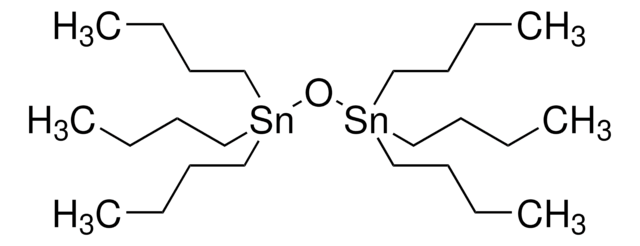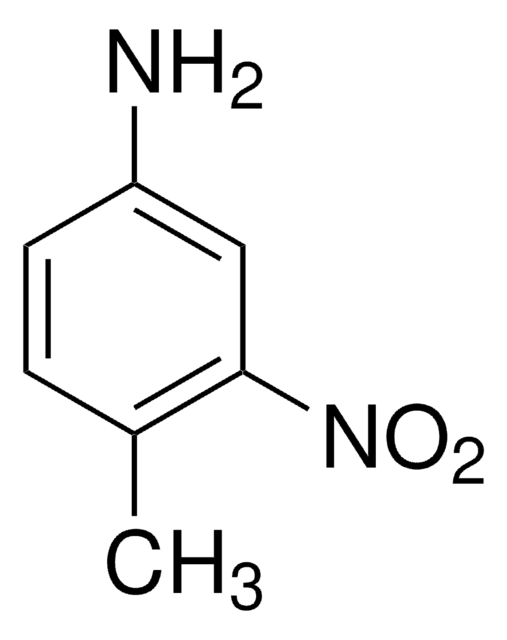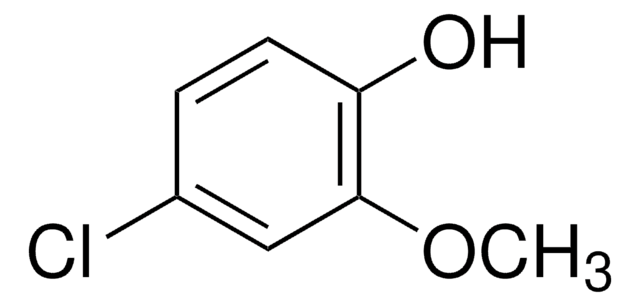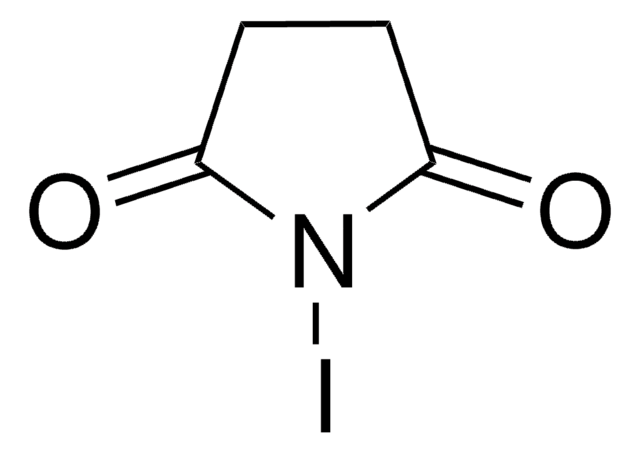All Photos(1)
About This Item
Linear Formula:
CH3C6H3(Br)F
CAS Number:
Molecular Weight:
189.02
MDL number:
UNSPSC Code:
12352100
PubChem Substance ID:
NACRES:
NA.22
Recommended Products
Assay
98%
form
liquid
refractive index
n20/D 1.53 (lit.)
bp
95 °C/50 mmHg (lit.)
density
1.494 g/mL at 25 °C (lit.)
SMILES string
Cc1ccc(Br)c(F)c1
InChI
1S/C7H6BrF/c1-5-2-3-6(8)7(9)4-5/h2-4H,1H3
InChI key
SLFNGVGRINFJLK-UHFFFAOYSA-N
General description
4-Bromo-3-fluorotoluene (1-bromo-2-fluoro-4-methylbenzene) is an aryl fluorinated building block. Synthesis of 4-bromo-3-fluorotoluene from o-nitro-p-toluidine (Fast Red Base GL), via diazo reaction at high temperature, Sandmeyer reaction, reduction and Schiemann reaction has been reported. Its density and refractive index have been determined.
Application
4-Bromo-3-fluorotoluene may be used in the preparation of 1-(4-cyano-3- fluorobenzyl)-5-imidazolecarboxaldehyde and 1-bromo-4-bromomethyl-2-fluorobenzene.
Signal Word
Warning
Hazard Statements
Precautionary Statements
Hazard Classifications
Eye Irrit. 2 - Flam. Liq. 3 - Skin Irrit. 2 - STOT SE 3
Target Organs
Respiratory system
Storage Class Code
3 - Flammable liquids
WGK
WGK 3
Flash Point(F)
95.0 °F - closed cup
Flash Point(C)
35 °C - closed cup
Personal Protective Equipment
dust mask type N95 (US), Eyeshields, Gloves
Regulatory Information
新产品
Choose from one of the most recent versions:
Already Own This Product?
Find documentation for the products that you have recently purchased in the Document Library.
J M Bergman et al.
Bioorganic & medicinal chemistry letters, 11(11), 1411-1415 (2001-05-30)
A series of aryloxy substituted piperazinones with dual farnesyltransferase/geranylgeranyltransferase-I inhibitory activity was prepared. These compounds were found to have potent inhibitory activity in vitro and are promising agents for the inhibition of Ki-Ras signaling.
Yaws CL.
The Yaws Handbook of Physical Properties for Hydrocarbons and Chemicals, 91-91 (2015)
SYNTHESIS OF 4-CHLORO-3-FLUOROTOLUENE AND 4-BROMO-3-FLUOROTOLUENE [J].
Tao ZHXXJ.
Speciality Petrochemicals, 1, 014-014 (2007)
Ilaria Peretto et al.
Journal of medicinal chemistry, 48(18), 5705-5720 (2005-09-02)
Flurbiprofen, a nonsteroidal antiinflammatory drug (NSAID), has been recently described to selectively inhibit beta-amyloid(1)(-)(42) (Abeta42) secretion, the most toxic component of the senile plaques present in the brain of Alzheimer patients. The use of this NSAID in Alzheimer's disease (AD)
Isaac T Schiefer et al.
Journal of medicinal chemistry, 54(7), 2293-2306 (2011-03-17)
Poor blood-brain barrier penetration of nonsteroidal anti-inflammatory drugs (NSAIDs) has been blamed for the failure of the selective amyloid lowering agent (SALA) R-flurbiprofen in phase 3 clinical trials for Alzheimer's disease (AD). NO-donor NSAIDs (NO-NSAIDs) provide an alternative, gastric-sparing approach
Our team of scientists has experience in all areas of research including Life Science, Material Science, Chemical Synthesis, Chromatography, Analytical and many others.
Contact Technical Service